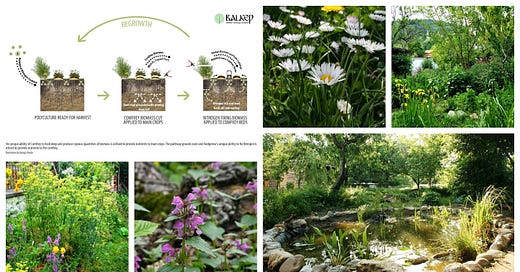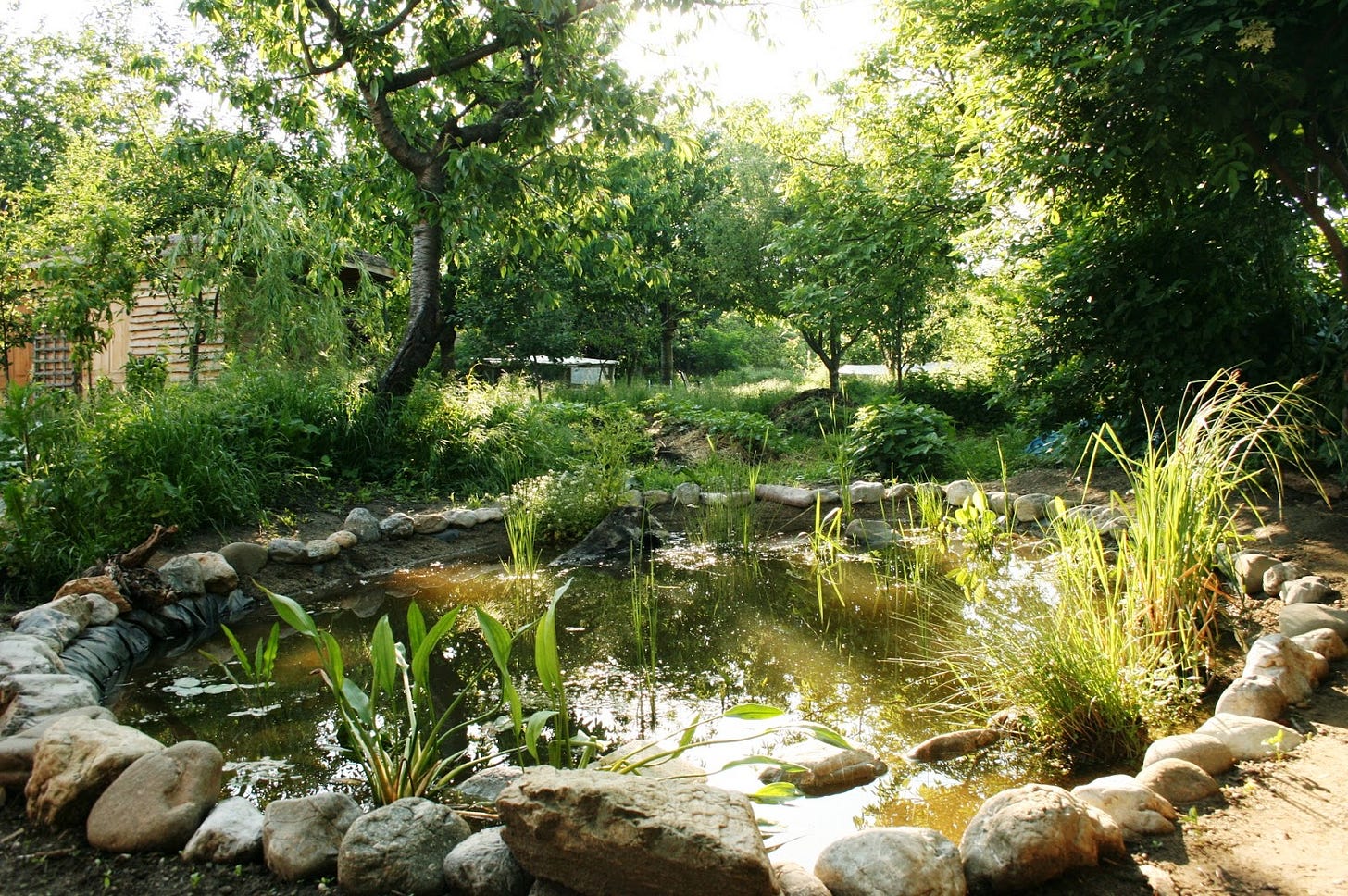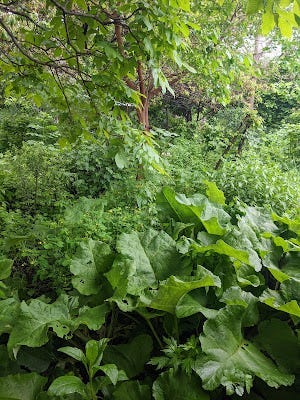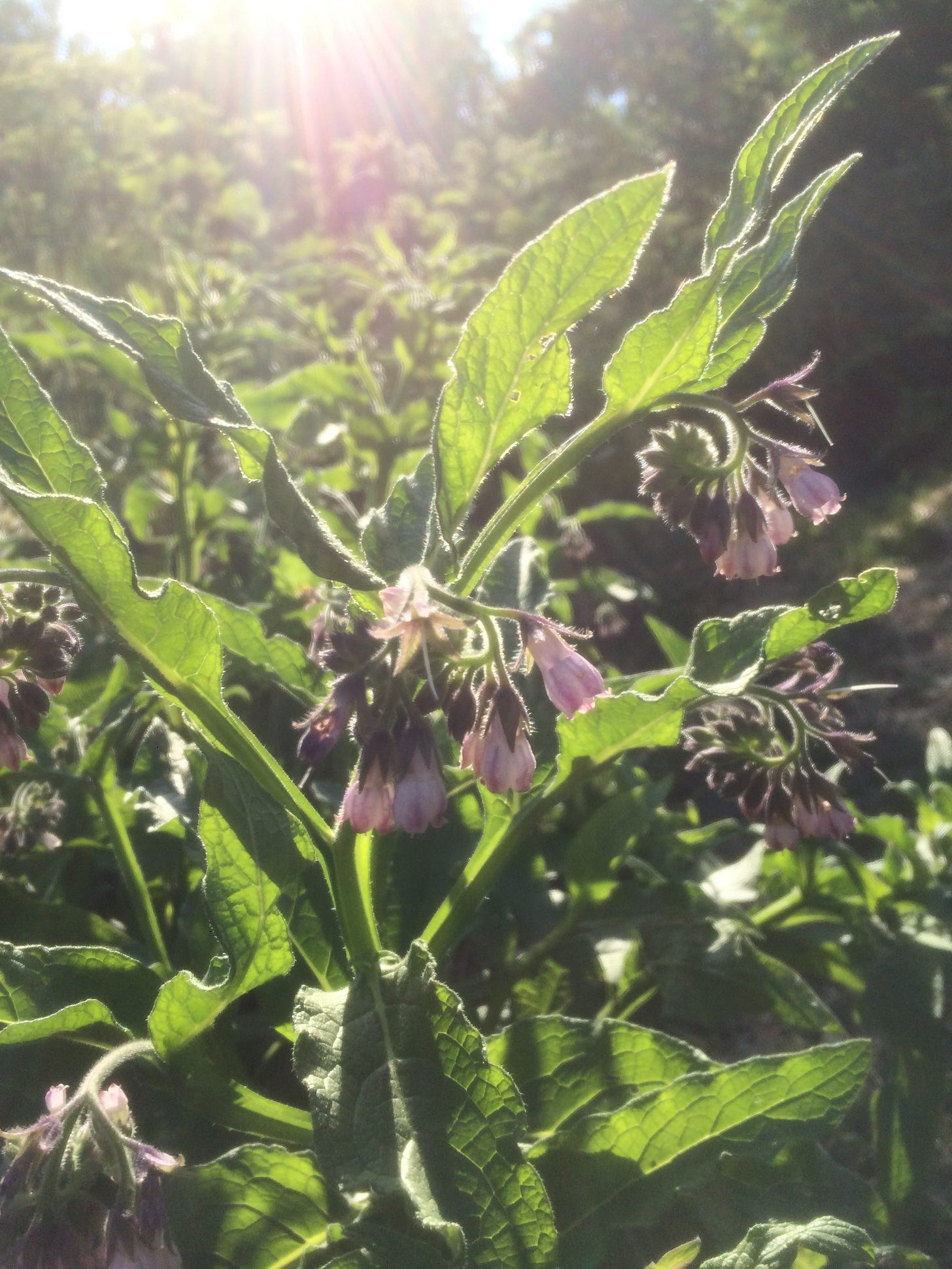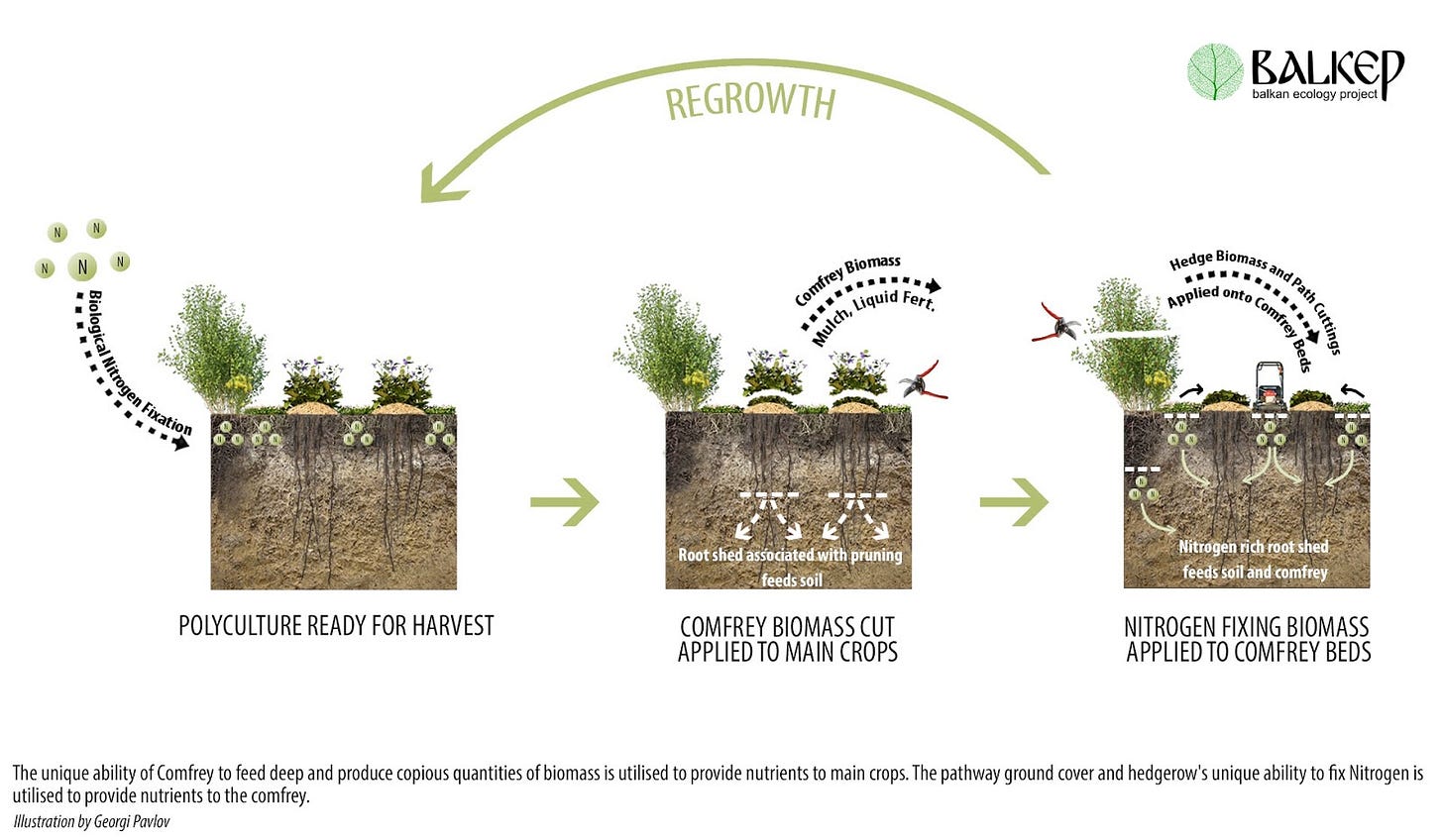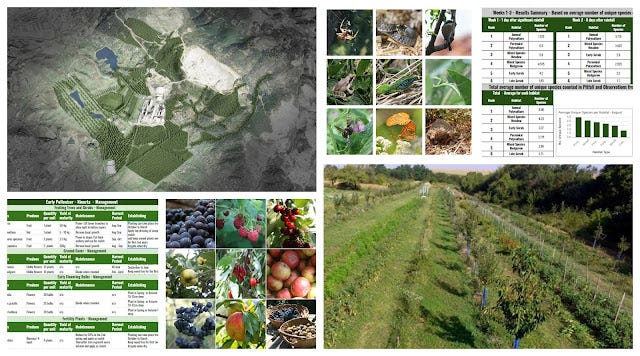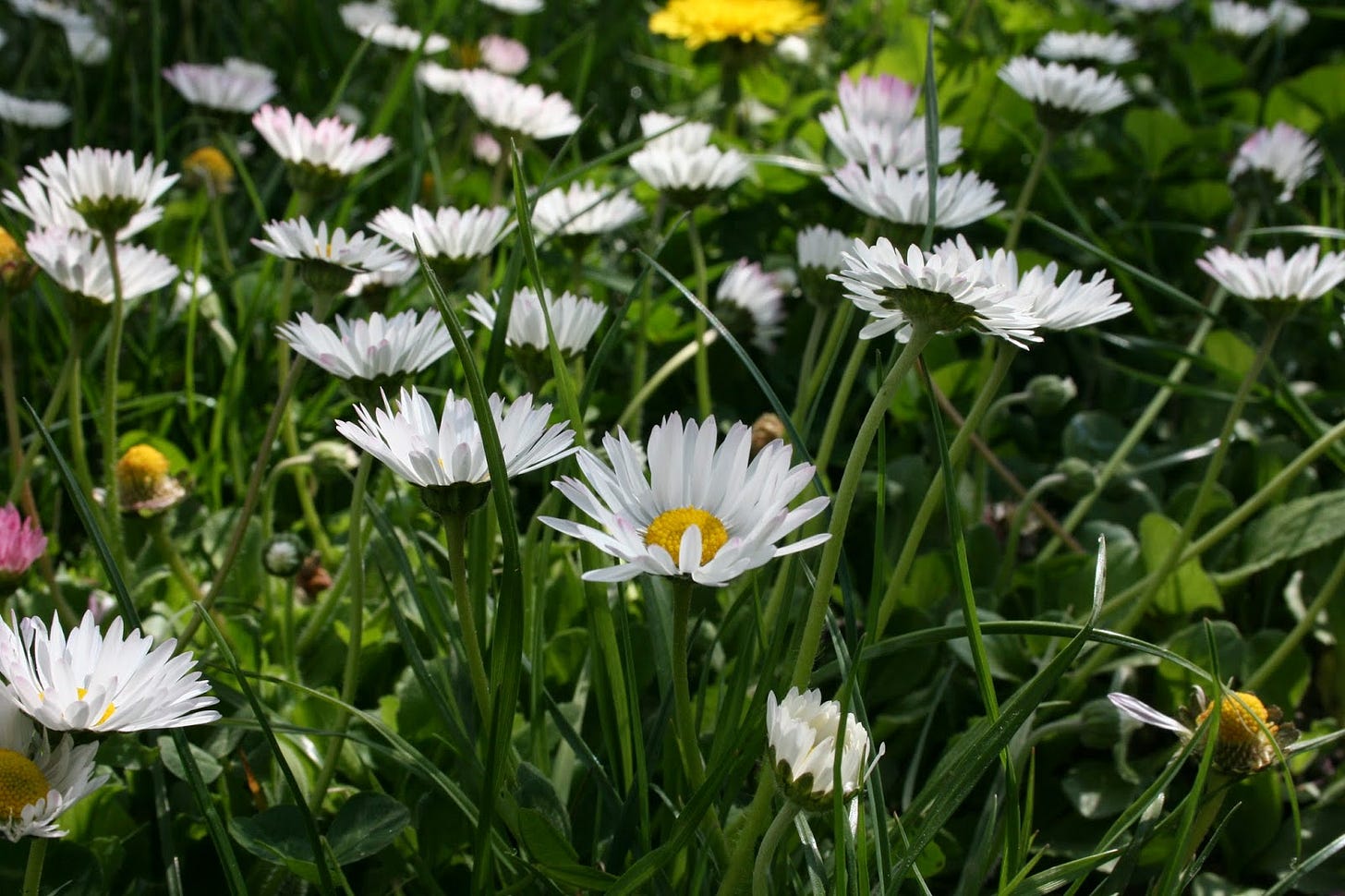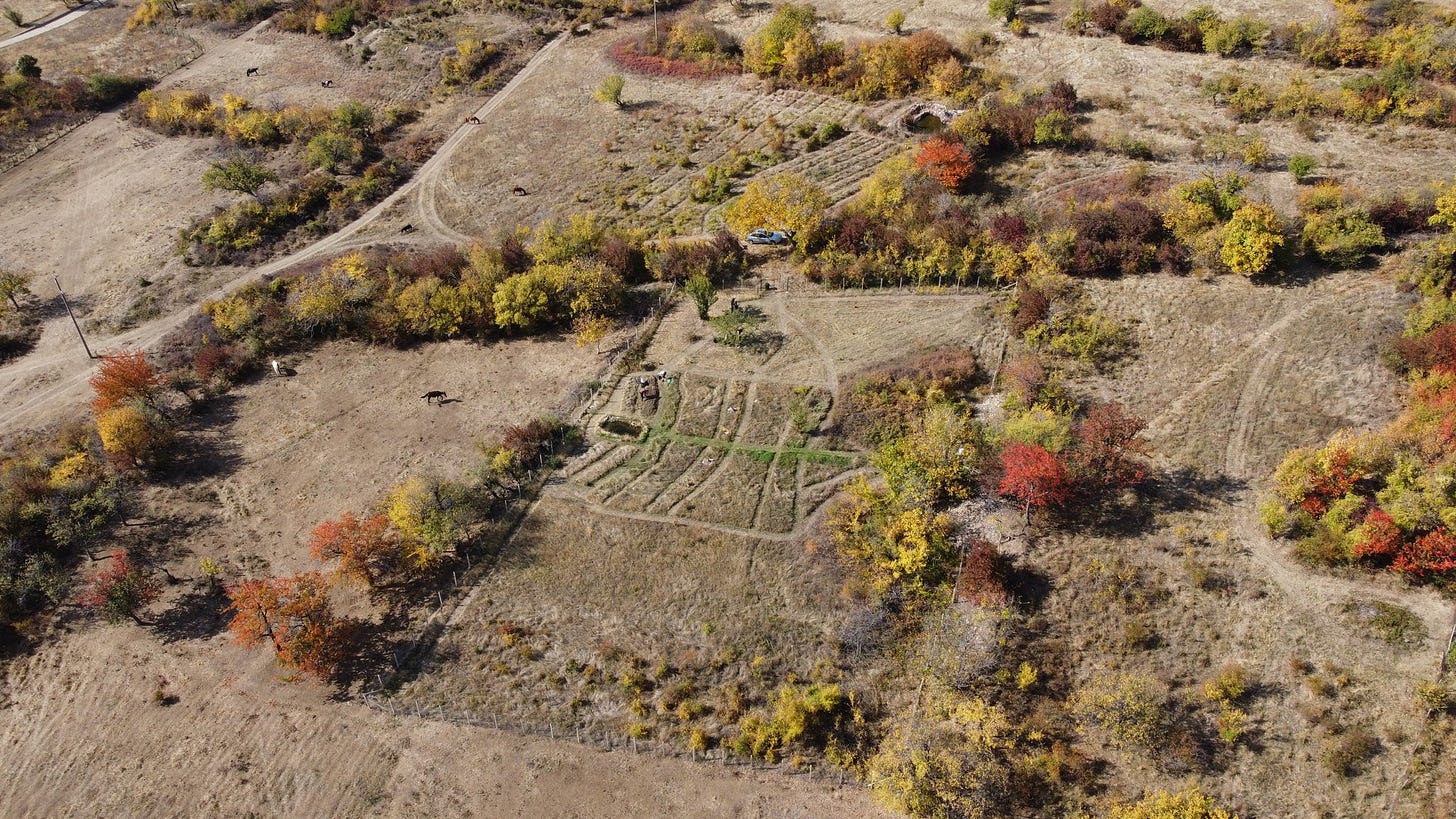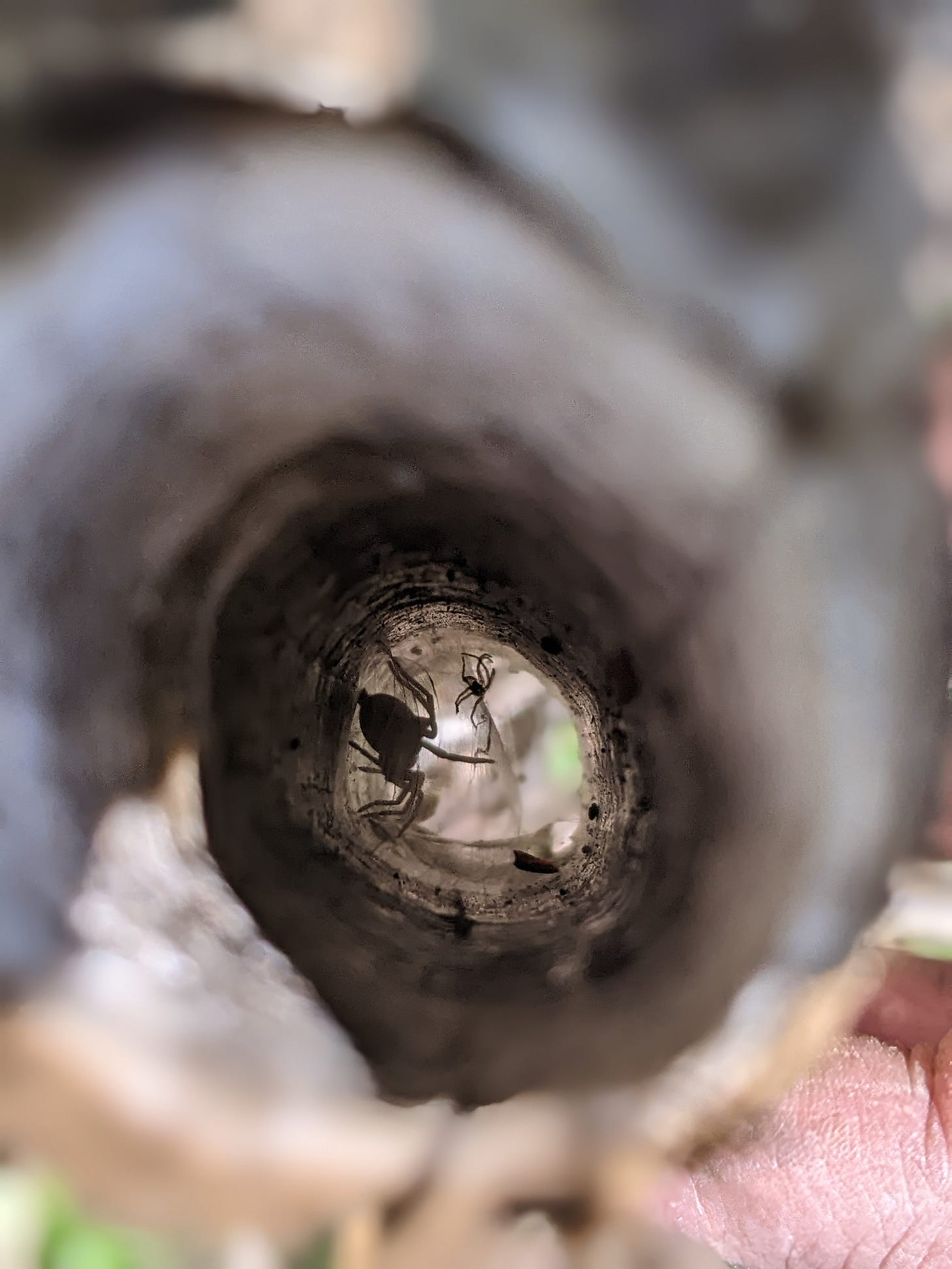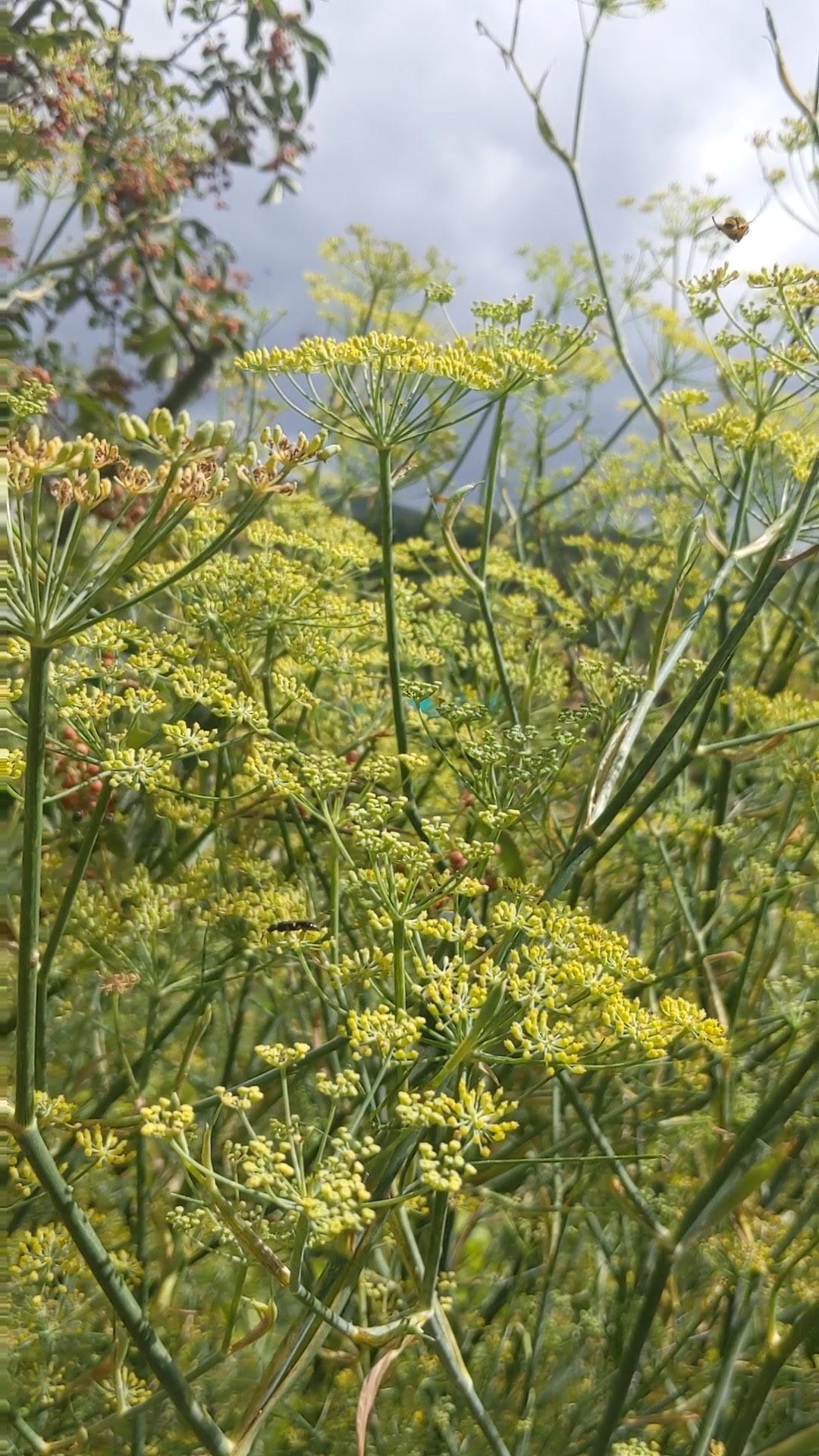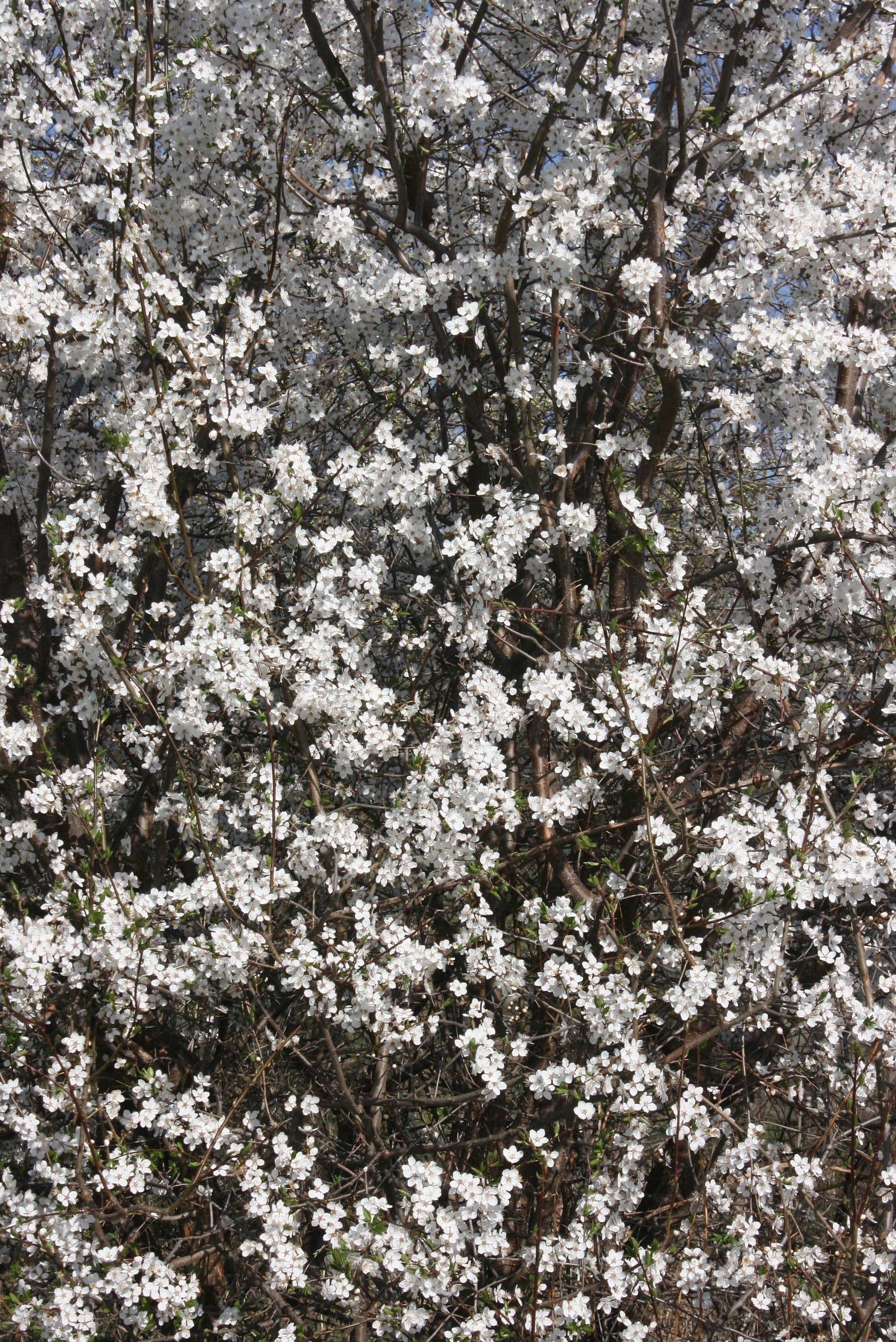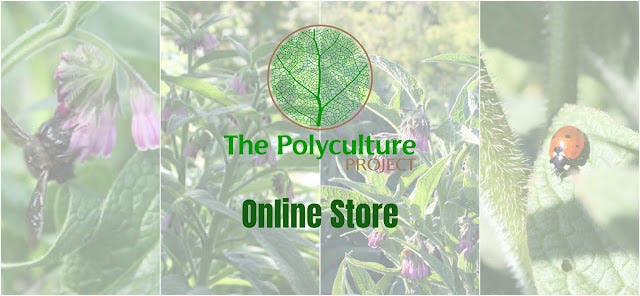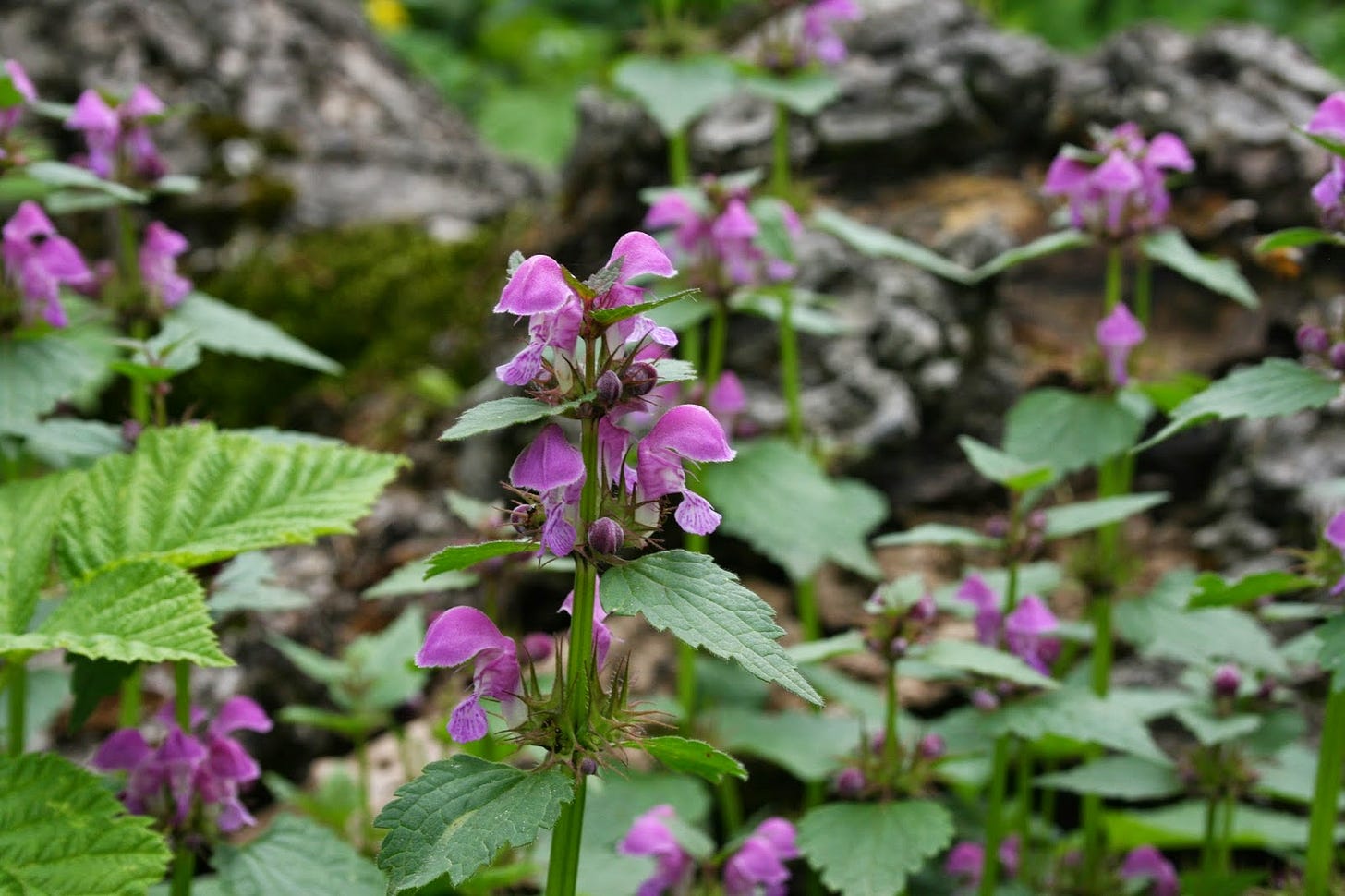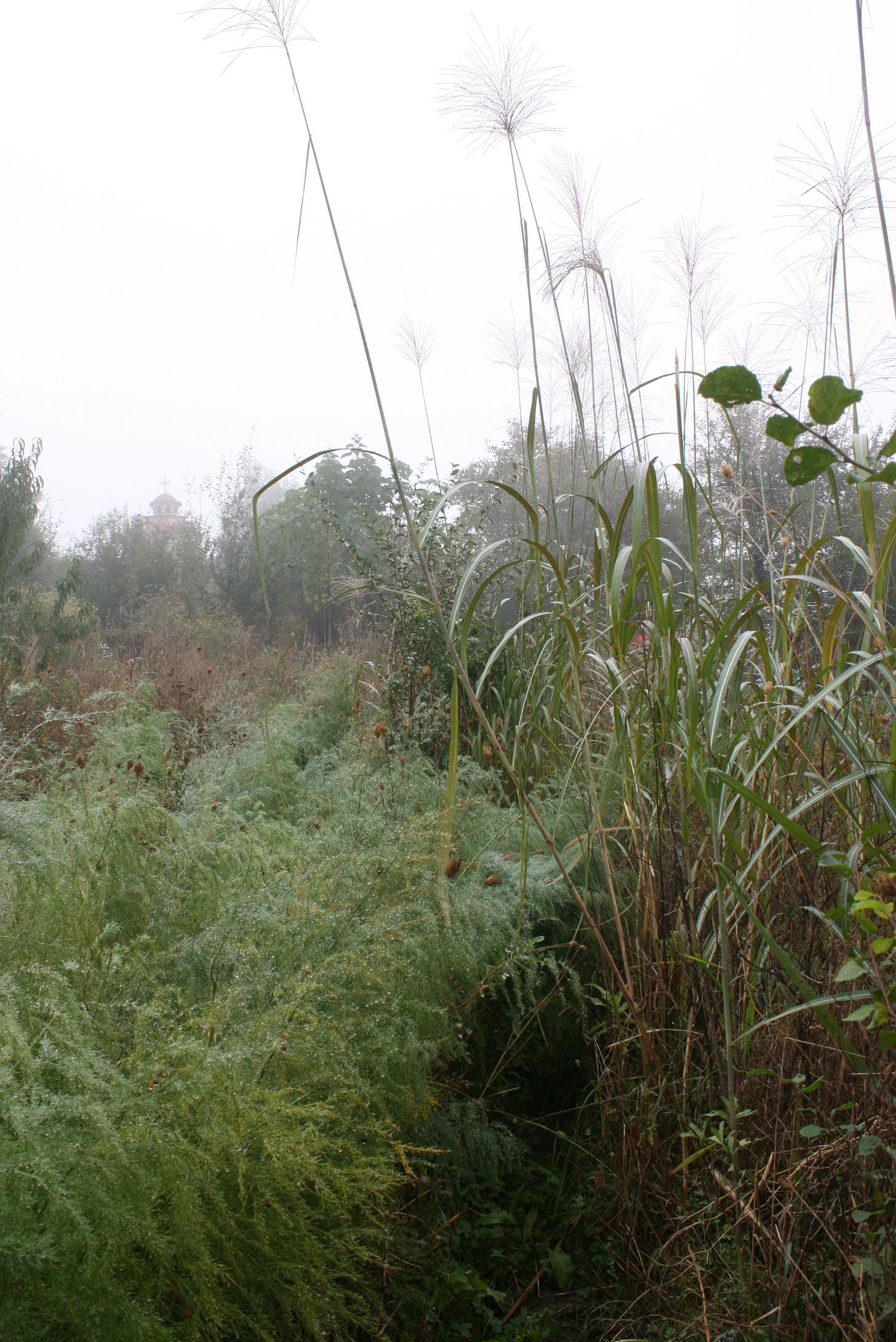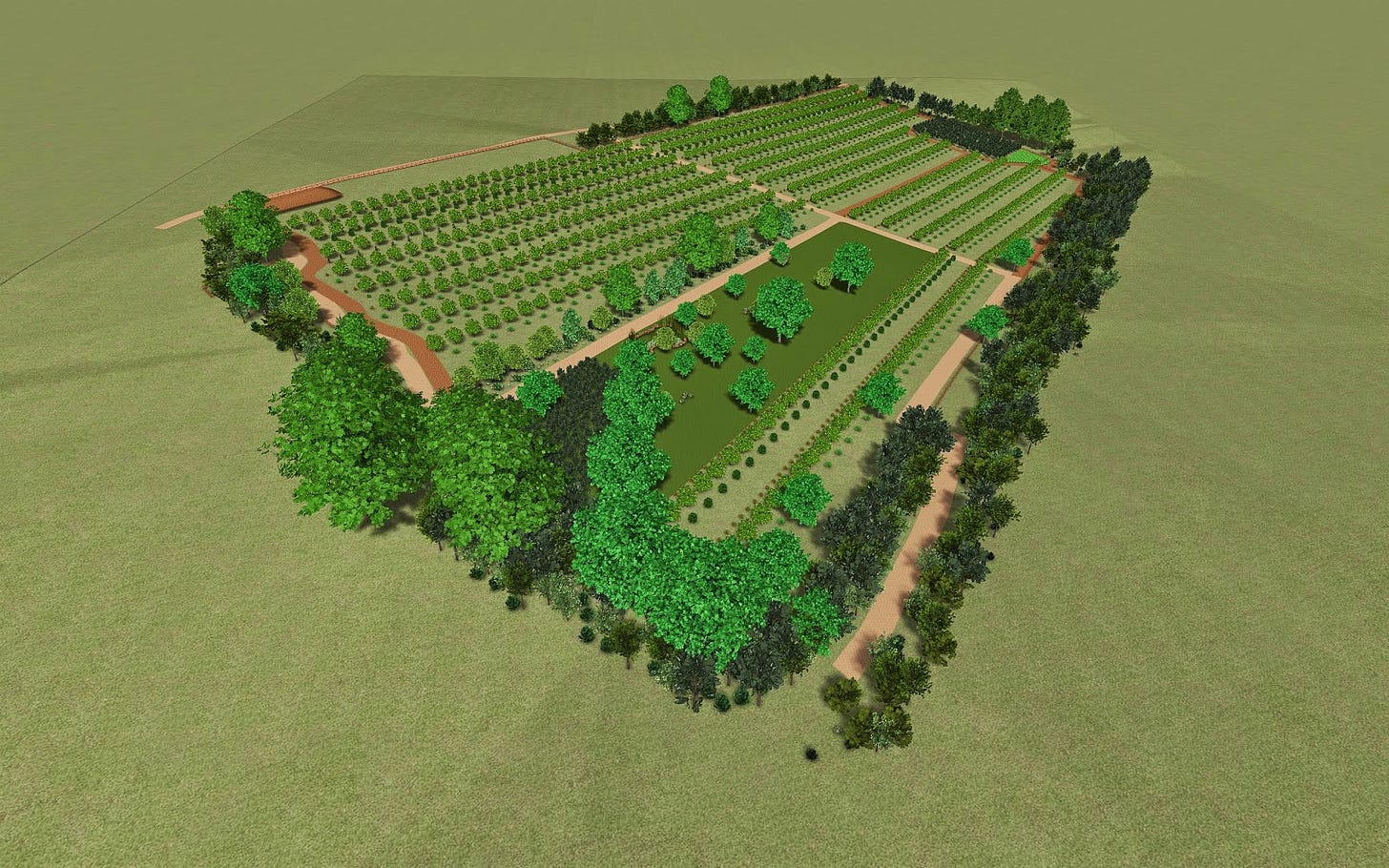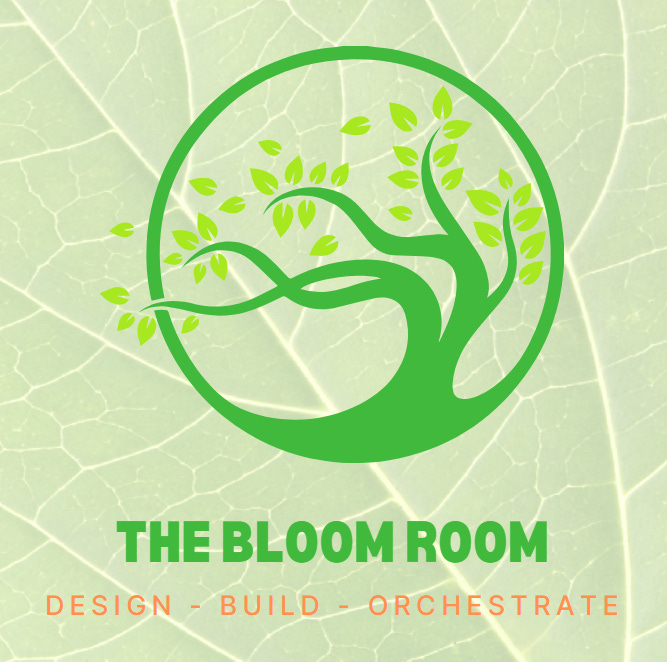How to Grow your own Mulch to Support your Forest Gardens and Regenerative Landscapes
Growing our own mulch for our gardens has long been a goal of mine. Currently we grow enough mulch for our perennial beds and the tree nursery but rely on imported straw for mulching annual beds and for establishing new perennial garden beds. At the moment we have no problem sourcing straw if we need extra but if/when the day comes that the farmers start using their own straw to improve their soil, which is becoming a more common practice, we’ll be needing to step up our mulch growing efforts.
During this post we’ll look at what makes a good mulch, a range of plants that we use for mulch and some possibilities for growing mulch for broad scale use.
What makes a good mulch plant ?
My ideal mulch plant has the following characteristics
grows fast
drought tolerant
competes minimally with crop plants
does not contain seed that easily spreads
is easy to handle and cut, i.e., not thorny/prickly or tough and fibrous
biodegrades relatively quickly in order to return the nutrients back to soil
I've broken down the main sources of mulch we produce into various categories.
Lets take a look at them one by one
Aquatic Plants
We grow emergent wetland species such us cattails (Typha spp), sedges (Carex spp. ) and rushes (Juncus spp.) on the banks of small ponds (6m x 3m), and within grey water reed beds (1m x 6m). The pond also provides suitable habitat for hornworts — Ceratophyllum spp. a submerged rootless perennial that gathers on the surface en masse. This plant makes an excellent mulch being rich in nitrogen, growing very fast and is easy to position around the base of plants. The emergent species provide a good thick carbon rich mulch that helps to reduce evaporation on the terrestrial beds and we cut these back in the spring in case they are used for overwintering invertebrates. Aquatic plants are an excellent source of mulch as there are no issues with seed germinating amongst your land based crops. For more on Aquatic Plants see our previous post here
Deep Rooted Perennial/ Biennials
Deep rooted perennial plants tend to produce a good amount of biomass, are generally drought tolerant and do not compete strongly with our crop plants. I have found native biennial weeds such as greater burdock — Arctium lappa a very useful mulch plant with the gigantic leaves growing back very fast after a cut.
Lesser burdock — Arctium minus is also useful albeit to lesser extent :) Although biennial, if you cut back these plants before flowering you can prolong their life, harvesting good quantities of seed free biomass. It’s good to allow some of the plants to flower as they are much loved by bees among other insects.
Comfrey- Symphytum x uplandicum ‘Bocking 14’ is a classic example of a deep rooted mulch plant. We have the plant scattered throughout the garden and planted in dedicated mulch production patches. The plants do require irrigation however and will only provide good leaf yields if grown on fertile soil. For more on comfrey check out our blog article here.
We are also using comfrey in an experimental perennial polyculture we call the biomass belt ,dedicated to growing mulch see here more on this.
Helianthus tuberosus — Jerusalem Artichoke provide a great annual source of biomass. For a good tuber harvest its best to wait until the end of the season before harvesting the mulch. We can never consume as much as we produce of these tubers in the kitchen but have found them to be much appreciated by our pigs and an excellent source of fresh winter food for our rabbits.
Regenerative Landscape Design - Online Interactive Course
Want to learn how to design, build and manage regenerative landscapes? Join us on our Regenerative Landscape Design - Online Interactive Course. We look forward to providing you with the confidence, inspiration, and opportunity to design, build and manage regenerative landscapes, gardens, and farms that produce food and other resources for humans while enhancing biodiversity.
You can access the course material at anytime and join the live sessions and interactive forums that run from May - Oct every year. All members of the Bloom Room receive a 500 EUR discount. To take up this offer all you have to do is become an annual subscribers to our Substack and register here with the promo code BLOOM.
I look forward to you joining !
Nitrogen Fixing Trees and Shrubs
These plants take a while to establish but make an excellent contribution.
I am expecting to also see good results from Alnus incana — Grey Alder and Alnus cordata — Italian Alder.
Annual trimming of shrubs such as Elaeagnus umbellata — Autumn Olive and Cytisus scoparius — Broom also provides good quantities of mulch.
Its best to avoid using thorny nitrogen fixing trees and shrubs for this purpose. For more info on nitrogen fixing plants see our previous post here
Lawn and Ground Cover
One of my favorite sources of mulch is lawn trimmings. They are great for mulching potted plants or applying a mulch into tight spots. Mixed species lawns will contain a more diverse mix of mineral nutrients, and lawns including a legume such as Trifolim repens — White Clover can provide a nitrogen rich mulch. It’s a good idea to leave some of the trimmings behind to keep the lawn healthy.
Autumn Leaf Fall and Herbaceous Stem Residue.
The annual shedding of leaves from trees and shrubs in our garden make a great contribution to our mulch capital. Leaves can be cleared from paths, lawns and wildflower beds (as they will disrupt the growth in these areas) and concentrated where they are of benefit such as the base of high demanding fruiting shrubs such as Blackcurrants or Blackberries.
Herbaceous perennials such as Mellisa officinalis — Lemon Balm and Mentha spp.- Mints will provide dead stems annually. It’s always a good idea to leave hollow stems of some herbaceous perennials to remain for the winter as they are utilized by invertebrates for egg laying and hibernating. If the plant does not have a hollow stem it can be cut back and used for mulch.
Foeniculm vulgare — Fennel provides large quantities of biomass and as far as I can tell the stems are not utilized by any organism over the winter.
In the vegetable garden all the remnants of my crops after harvesting go straight back to the surface for recycling.
Tree Pruning’s
Woody pruning’s from shrubs, trees and vines cut into small pieces (5–10cm) make good mulch in the mature areas of the forest garden where there is generally well established fungal soils specializing in breaking down the lignified woody material.
I’ve had great results from coppicing Paulownia tomentosa — Empress Tree when they are 3 yrs old and chop and dropping the soft new growth 3 or 4 times a year. We’ve been doing this for almost 10 years now and the plants seem to be as healthy and vigorous as ever.
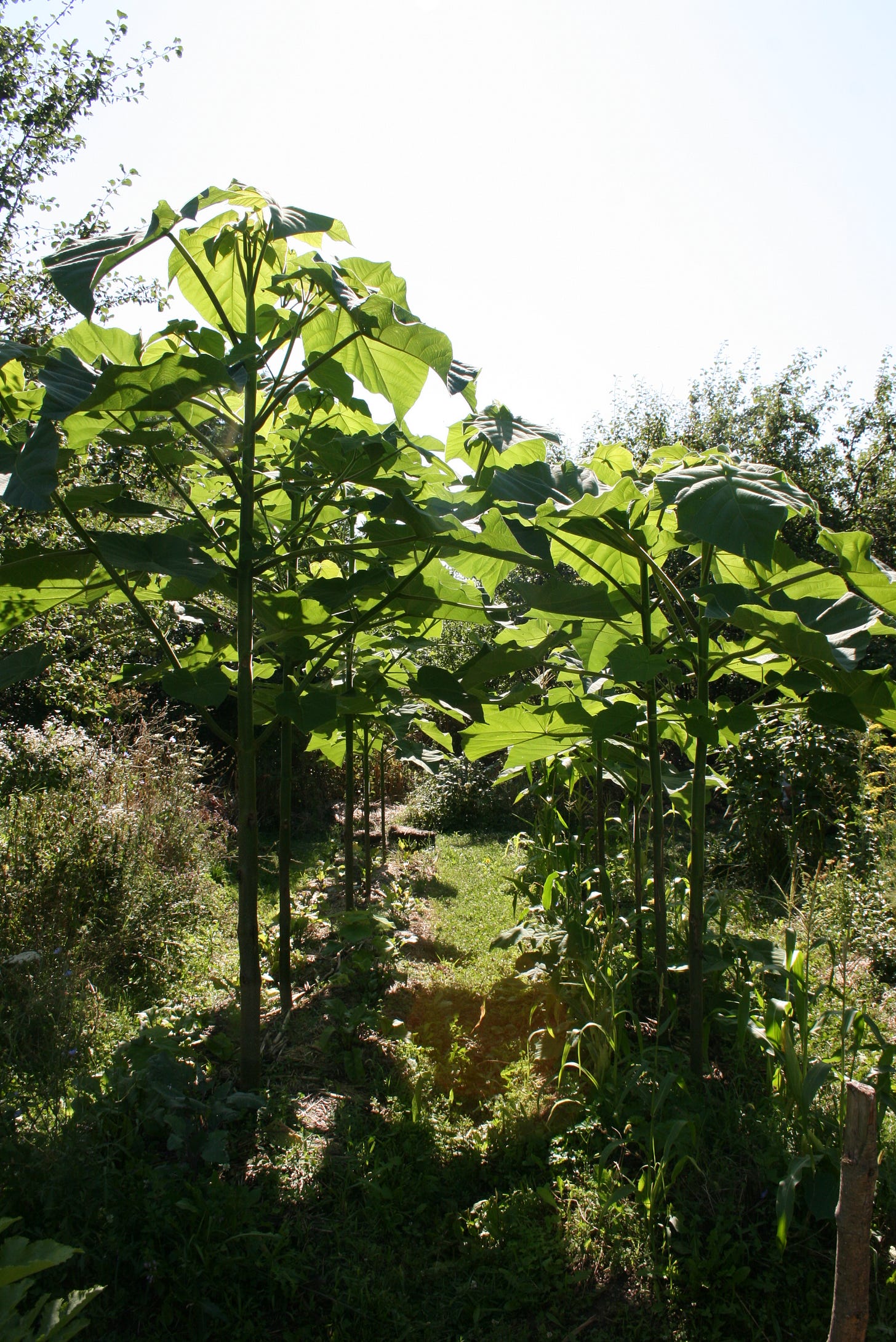
Prunus cerasifera - Cherry Plum is another great plant for producing biomass in our region as weel as beauttiful blossom and delicious fruits. Thinning, lifting and trimming are all ways to produce biomass from these plants and still get goof annual yields of fruits.
Some other productive woody plants that we have available from our nursery include:
Welcome to our Online Store where you can find Forest Garden/ Permaculture plants, seeds, bulbs, and Polyculture multi-packs along with digital goods and services such as Online Courses, Webinars and eBooks. We hope you enjoy the store and find something you like. It's your purchases that keep our Project going.
You can also find our full list of trees. shrubs and herbs for forest gardens on our nursery website.
Living Mulches
In the more mature areas of the garden where the trees have established (5 yrs and older) I have dispensed with mulch all together in favour of ground cover plants that can be considered living mulches. Some the most successful perennial living mulches I have found that form good dense cover in the shade include Ajuga reptans — Bugle, Lamium maculatum — Spotted Dead Nettle, Sedem spurium — Caucasian Stonecrop , Vinca major -Perwinkle and Stachys officinalis — Betony.
C4 and other Grasses
Another great option for mulch production is perennial grasses that produce large amounts of biomass, can grow on poor to average soils are drought tolerant, reproduce via rhizomatous growth and have seed ripening from late June on wards or have sterile seed. C4 grasses are even more suitable — For more on C4 plants see here.
Two plants that appear most suitable are Miscanthus x giganteus (C4) and Arundo donax (C3). In an experiment you can find here recorded yields of biomass were 40 t/ha/yr in M.giganteus and 30 t/ha/yr in A.donax.
We are offering Miscanthus x giganteus plants and rhizomes from our nursery stock see here for our plant profile and rhizome packs here
Scaling up Mulch Production
In order to grow enough mulch to provide a water retaining, weed excluding barrier for annuals I would certainly need more space. A larger wetland area would be ideal, with aquatic species growing very fast and the seed bearing parts of the plants being non problematic to use on terrestrial beds. If you don’t have a reliable aquatic habitat, the next best option for growing quantities of mulch without irrigation and fertilization is probably grass.
You can read about a design here that aims to grow enough mulch to support approx. 670 fruit trees and 1360 soft fruit shrubs on a 5 hectare site.
That’s all for now. If you have a favorite mulch plant I’d be delighted to hear about it, please let us know in the comment box below.
Support Our Project
If you appreciate the work we are doing you can show your support in several ways.
Become a member of the Bloom Room. A $70 annual subscription to our Substack provides you with access to live sessions, design tutorials, a members forum and more, see details here.
Make a purchase of plants or seeds from our Nursery or Online Store
Joining us for one of our Practical Courses or Online Courses
Comment, like, and share our content on social media.
Want to learn more about Regenerative Landscape Design? Join The Bloom Room!
The Bloom Room is designed to create a space for more in-depth learning, for sharing projects and ideas, for seeking advice and discovering opportunities.
Ultimately, it aims to build a more intimate, interactive, and actionable relationship between members, a way for the Bloom Room community to support each other’s projects and learning journeys, and to encourage and facilitate the design, build, and management of more regenerative landscapes across our planet.
What you can expect as a member of the Bloom Room
As a member of the Bloom Room you can expect;
Access to an interactive forum where you can ask questions, direct what type of content you would like to see as well as share your own content and projects.
Monthly live session featuring general Q&A and tutorials on design software for creating and presenting polycultures.
Live session every month for members to showcase your projects, plans, designs, and gardens, with guest speakers from the community.
Full Access to all of the content on Substack
A 50% discounts on all of our online courses
Future opportunities to join our Global Regenerative Landscape Design and Consultancy Service, with potential roles for those with the will and skill to join our design team.
An opportunity to take part in the group ownership of a Regenerative Landscape. You will find more details on that here.
Become a paid subscriber to our Substack to join. The annual subscription is currently $70 and the monthly subscription is $7 (monthly subscription excludes discounts for products and services) . You can join here, we look forward to meeting you!

